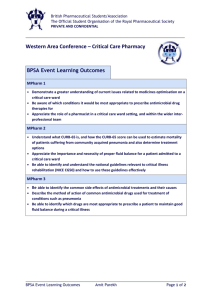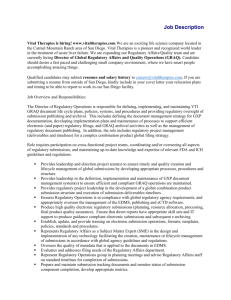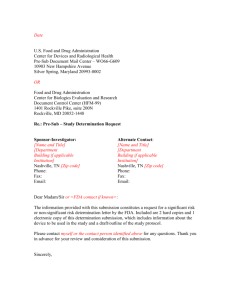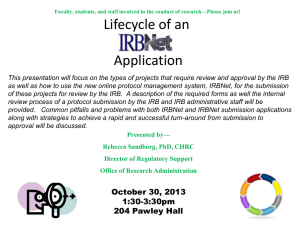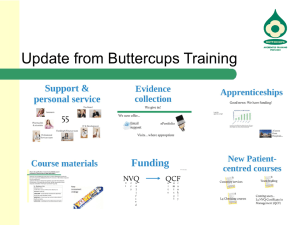PWATS LLL poster - StudyNet
advertisement
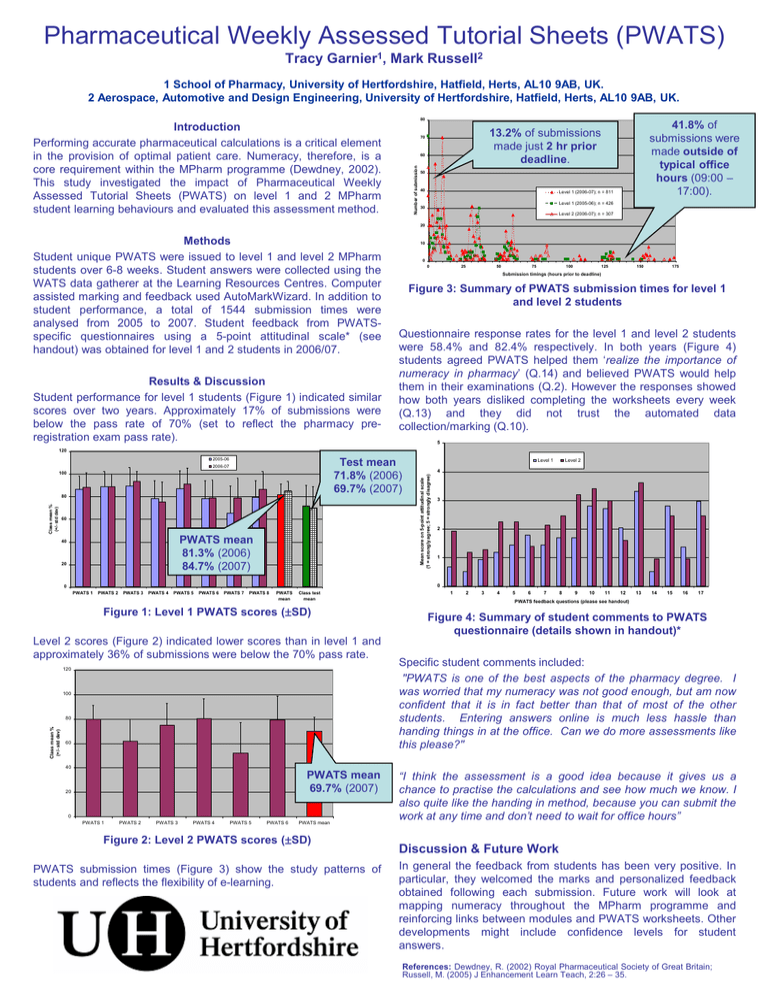
Pharmaceutical Weekly Assessed Tutorial Sheets (PWATS) Tracy Garnier1, Mark Russell2 1 School of Pharmacy, University of Hertfordshire, Hatfield, Herts, AL10 9AB, UK. 2 Aerospace, Automotive and Design Engineering, University of Hertfordshire, Hatfield, Herts, AL10 9AB, UK. 80 Introduction Performing accurate pharmaceutical calculations is a critical element in the provision of optimal patient care. Numeracy, therefore, is a core requirement within the MPharm programme (Dewdney, 2002). This study investigated the impact of Pharmaceutical Weekly Assessed Tutorial Sheets (PWATS) on level 1 and 2 MPharm student learning behaviours and evaluated this assessment method. 60 Number of submission 41.8% of submissions were made outside of typical office hours (09:00 – 17:00). 13.2% of submissions made just 2 hr prior deadline. 70 50 40 Level 1 (2006-07); n = 811 Level 1 (2005-06); n = 426 30 Level 2 (2006-07); n = 307 20 Methods Student unique PWATS were issued to level 1 and level 2 MPharm students over 6-8 weeks. Student answers were collected using the WATS data gatherer at the Learning Resources Centres. Computer assisted marking and feedback used AutoMarkWizard. In addition to student performance, a total of 1544 submission times were analysed from 2005 to 2007. Student feedback from PWATSspecific questionnaires using a 5-point attitudinal scale* (see handout) was obtained for level 1 and 2 students in 2006/07. Results & Discussion Student performance for level 1 students (Figure 1) indicated similar scores over two years. Approximately 17% of submissions were below the pass rate of 70% (set to reflect the pharmacy preregistration exam pass rate). 10 0 0 25 50 75 100 125 150 175 Submission timings (hours prior to deadline) Figure 3: Summary of PWATS submission times for level 1 and level 2 students Questionnaire response rates for the level 1 and level 2 students were 58.4% and 82.4% respectively. In both years (Figure 4) students agreed PWATS helped them ‘realize the importance of numeracy in pharmacy’ (Q.14) and believed PWATS would help them in their examinations (Q.2). However the responses showed how both years disliked completing the worksheets every week (Q.13) and they did not trust the automated data collection/marking (Q.10). 5 120 Test mean 71.8% (2006) 69.7% (2007) 2006-07 100 Class mean % (+/- std dev) 80 60 PWATS mean 81.3% (2006) 84.7% (2007) 40 20 Level 2 3 2 1 0 0 PWATS 1 PWATS 2 PWATS 3 PWATS 4 PWATS 5 PWATS 6 PWATS 7 PWATS 8 PWATS mean Class test mean Figure 1: Level 1 PWATS scores (SD) Level 2 scores (Figure 2) indicated lower scores than in level 1 and approximately 36% of submissions were below the 70% pass rate. 120 100 80 Class mean % (+/- std dev) Level 1 4 Mean score on 5-point attitudinal scale (1 = strongly agree; 5 = strongly disagree) 2005-06 60 1 2 3 4 5 6 7 8 9 10 11 12 13 14 15 16 17 PWATS feedback questions (please see handout) Figure 4: Summary of student comments to PWATS questionnaire (details shown in handout)* Specific student comments included: "PWATS is one of the best aspects of the pharmacy degree. I was worried that my numeracy was not good enough, but am now confident that it is in fact better than that of most of the other students. Entering answers online is much less hassle than handing things in at the office. Can we do more assessments like this please?" 40 PWATS mean 69.7% (2007) 20 0 PWATS 1 PWATS 2 PWATS 3 PWATS 4 PWATS 5 PWATS 6 PWATS mean Figure 2: Level 2 PWATS scores (SD) PWATS submission times (Figure 3) show the study patterns of students and reflects the flexibility of e-learning. “I think the assessment is a good idea because it gives us a chance to practise the calculations and see how much we know. I also quite like the handing in method, because you can submit the work at any time and don’t need to wait for office hours” Discussion & Future Work In general the feedback from students has been very positive. In particular, they welcomed the marks and personalized feedback obtained following each submission. Future work will look at mapping numeracy throughout the MPharm programme and reinforcing links between modules and PWATS worksheets. Other developments might include confidence levels for student answers. References: Dewdney, R. (2002) Royal Pharmaceutical Society of Great Britain; Russell, M. (2005) J Enhancement Learn Teach, 2:26 – 35.

